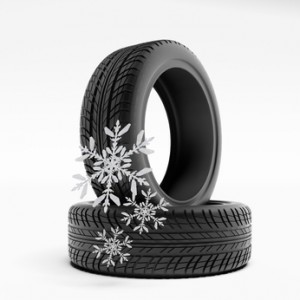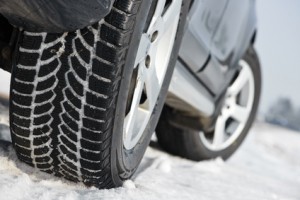According to the specialist we should put on winter tires once it’s colder than 7Celsius. Under this temperature the summer tires freeze, but if we use winter types, we can reduce the stopping distance by half.
Why should we use it above the freezing point?
The pattern of most winter tires shows a V-shape. This is a huge help on wet roads in rainy weather and if there is slush on the road, we can go at higher speeds. It also helps to lead the water under the tires more quickly. It contains Silica additives, which helps to maintain a great adhesion, to start, break and turn easily.
Which type should we choose?
A great winter tire has good adhesion in rain, snow and in all other conditions. But there isn’t a perfect winter tire. Some types are good for one thing, some types are bad.
The types are different in the materials. There are 3 types: All-weather tires, new and renewed.
What are the advantages and disadvantages of these types?
New:
+ it’s the strongest enemy of snow and slush
– it’s not so good on dry roads
All-weather tires:
+ environment friendly, wears away slowly, a comfortable solution (thinking of winter 2013)
– they slide easily on snowy roads when we brake
– they are not so resistant to extreme weather conditions
If we rarely drive in winter, thats when we should use it.
Renewed
They have the same attributes as the new winter tires, but usually they are cheaper.

Where are winter tires required?
Hungary
In Hungary, there aren’t any mandatory law about the use of winter tires. However, know this:
- We have to use it on the roads marked with “Snow chains required”.
- It’s forbidden to use studded tires on public roads.
- Although the use of winter tires is not required, if there is an accident, the summer tire user will be guilty in 20% of cases.
Austria – It is required between the 1. November and the 15. April (or in winter-like weather conditions) on all cars or trucks weighting below 3.5t. The winter tyre has to have at least 4mm deep threading. As an alternative to winter tyres, snow chains may be used on at least two driving wheels. These may only be used in case the road is completely covered by snow or a layer of ice. If we don’t keep to these regulations, we may pay a fine up to 5,000 Euros.
Czech Republic – Between the 1 November and 30 April you must use snow tires with a minimum tread depth of 6 mm.
Croatia – Cars are required to be fitted with winter tires or all-weather tires during periods of wintry conditions. If there are several layers of snow and ice we must carry a set of snow-chains. In Lika and Gorki Kotar it is required to use them.
Serbia – If the weather conditions justify it we have to use winter tires and snow chains between the 1 November and 1 April.
Slovakia – We have to use winter tires in winter-like conditions, there aren’t any specified date. In case the road is covered by a think layer of snow the use of tires with a minimum tread depth of 4 mm is mandatory. The penalty for violation is 60 Euro.
Slovenia – From the 15 November until the 15 March it’s required to use winter tires on at least two driving wheels. If there at least 5 cm thick snow, snow chains are also mandatory.
Romania –Between the 1 November and 31 March it is required to use snow tires.
France – The use of winter tyres is not required in France. In some mountainous areas signs warn drivers that snow chains are necessary.
Luxembourg – There is no legal requirement for the use of snow tires. The “mixed” solution, that we use summer tires on some wheels and winter tires on others is forbidden.
Germany – The use of winter tires is not required, but if we use summer tires and an accident happens, we have to pay penalties.
Switzerland – There are similar rules in Switzerland as in Germany. In case we get stuck the driver has to pay high rescue cost beside the penalties and the compensation cost.
Italy – From 15th October to 15th April vehicles must be equipped with winter tyres in the Val d’Aosta area.


